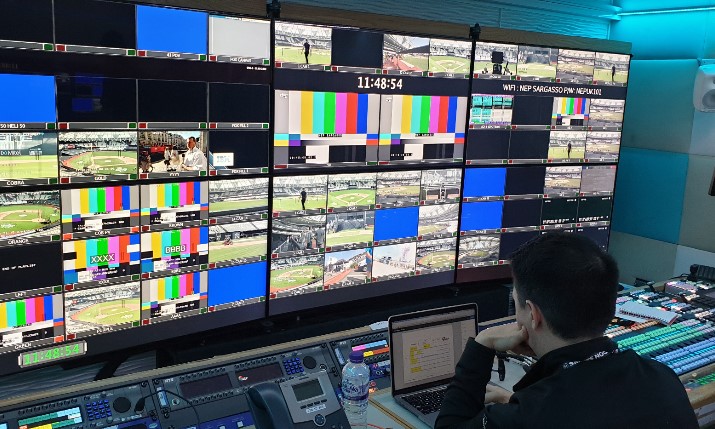NEP outlines its vision for sports broadcasting in the next decade

By Brian Clark, director of sales, NEP UK, Donald Begg, director of technology, NEP UK, and Ben Tompsett, head of broadcast at Creative Technology
Looking ahead at 2020 and beyond, one of the things we see is that remote production is going to become more mainstream. The production model is maturing all the time and, with the increasing availability of bandwidth, it’s becoming a steadily more attractive and viable option for many broadcasters.
There are still questions anyone has to ask themselves before heading down the remote path though: is it truly a cost-effective solution; does it enhance the production; is it both practical and technically viable; and is it really needed? If the answer to all those is yes, then it’s a solution worth pursuing.
We will be in a mixed ecology of trucks and remote facilities for a number of years to come, however, and the key for facilities companies such as ourselves is to be able to offer clients the various options — remote or otherwise — that best suit their budgets while still ensuring that the production vision of the event is satisfied or enhanced.
Standardisation of 4K HDR
We also expect to see 4K HDR becoming increasingly standardised as 2020 wears on. The push towards HDR is a natural evolution with the benefits of HDR being shown quite clearly on the screen. We have to remember though that it is still important to satisfy the current majority of viewers who watch in REC709 SDR. The aim of all productions and the facilities companies needs to be to ensure the delivery of both can be achieved economically and easily within current production workflows.
The 8K production surrounding Tokyo 2020 will be of industry interest, but the high bitrates involved still mean there are many workflow issues to be solved.
The march towards IP will continue at a healthy pace, but SDI will remain very much alive and healthy for the foreseeable future. 5G will start to roll out across the UK and speeds will increase. As far as the industry is concerned application-based platforms on COTS hardware will either be previewed or released by manufacturers as they look to pivot their operating models from CAPEX to OPEX models. As far as the viewer is concerned, online and non-traditional broadcast outlets will begin to overtake linear broadcast when it comes ‘hours watched’ of live content.
Watching the environmental impact
Elsewhere, productions are starting to take increasing note of the environmental impact of their activities. While the move towards remote production is definitely part of that story, it’s still early days when it comes to the deployment of hybrid and/or electric vehicles in the OB fleet. That said, there is a definite surge of interest in the use of power cells over diesel generators and the ability to use Uninterruptible Power Supply systems in clever ways to minimise the impact on the environment. This is definitely a growing area for the future.
Companies are going to have to work increasingly hard to differentiate themselves, especially when it comes to bidding for the same jobs. Environmental factors could well start being a consideration there, but there’s also an increasing amount of ‘secret sauce’ coming into play as the larger organisations build their own software based solutions to enhance productions and find unique ways of joining the dots on the technology landscape, especially as technologies such as augmented reality (AR) edge towards the mainstream
It’s not all about software though, and lastly the need for excellent talent will be stronger than ever. We plan to continue to work hard at nurturing new talent, and giving them the training, encouragement, and tools required to deliver outstanding results for our clients.
We have an active training and mentoring programme and the aim is to take on between 15 and 25 trainees each year across our UK businesses. “Grow your own” may take a little longer, but it’s definitely worth the wait and effort.
